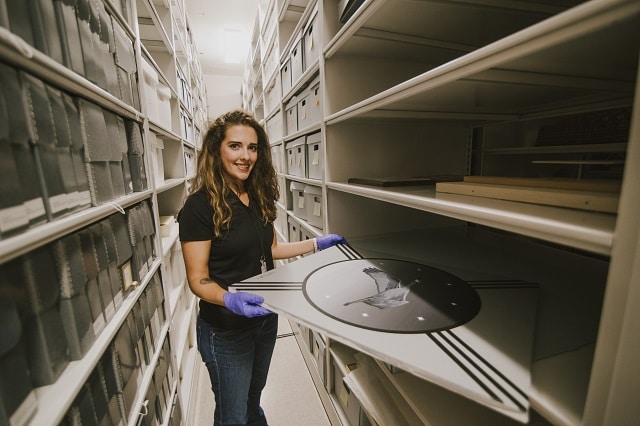
Bozho,
I am excited to write my second installment regarding my position and duties at the Citizen Potawatomi Nation Cultural Heritage Center as the Ethnology Collections Manager.
As discussed in my previous article, the CPN Ethnology Collection is comprised of items that have been loaned (given to CHC for a designated amount of time), gifted (permanently given to CHC), or purchased by the CHC curatorial staff to supplement the collection.
The collection itself is made up of smaller curatorial groupings of objects. An item will be cataloged into a certain collection based on many factors such as the donor or loaner’s wishes, condition and needs of the CHC. Most items that are donated or loaned are cataloged into the permanent collection which means that these items can be displayed if deemed suitable. They are only handled by the curatorial staff and the item has the proper accompanying paperwork, including a loan agreement or deed of gift.
Some institutions separate their donated and loaned objects, but we catalogue them together to better keep track of items and to give them similar catalog number sequences. I will discuss this numbering sequence in the next installment. It is noted in the paperwork if an item is loaned and this is reflected throughout documentation.
Objects in the permanent collection are properly safeguarded to ensure that the item survives well into the future. Special measures are taken by the curatorial staff to maintain not only the object, but also its associated records as well. An object is just an object without the history or origin to go along with it. Furthermore, objects in the permanent collection can be loaned to other institutions for display if deemed appropriate because the CHC solely owns the object.
Items can also be cataloged into the education collection. The objects in this collection are cataloged similarly to the objects in the permanent collection, but these items can be handled by people outside of the curatorial staff. As much as we do not want anything to happen to the items in this collection, they are intended to be handled and used for teaching purposes. An example of an item that we have in the education collection is a bagwzhanatek (stickball stick) that the curatorial staff purchased. In addition, if there are multiples of an item, some might be deemed acceptable for the education collection and while others go into the permanent collection; typically the items that are in the best condition go into the permanent collection.
Finally, very similar to the education collection is the prop collection, which is comprised of objects that the CHC curatorial staff has acquired over the years to supplement exhibitions. Props are utilized throughout the exhibit space in the CHC. Even though these items may be handled by those outside of the curatorial staff, touching items on display at the CHC is strictly prohibited unless the exhibit or item is explicitly labeled as an interactive. Props can either be purchased or made. For example, we have multiple replica firearms that were built for our CPN Veterans’ Memorial and exhibit. On that note, if you haven’t had a chance to look at the veterans’ memorial and exhibit recently, please visit the CHC and check it out. We have the exhibit updated through World War I and it is looking very nice.
If you have any questions for the curatorial staff, please contact the CHC at (405) 878-5830.
